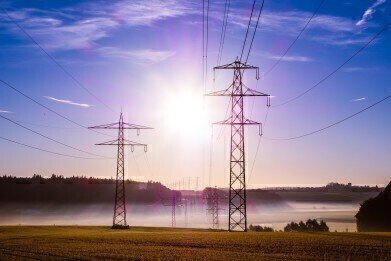Environmental Laboratory
Can the UK Achieve Zero-Carbon Electricity?
May 07 2019
The UK’s national grid could be powered by 100% zero-carbon electricity as early as 2025, according to the National Grid Electricity System Operator (ESO). In a new report published earlier this month, the ESO claimed that it could enjoy periods of zero-carbon power as long as there was sufficient renewable energy to meet demand.
Of course, the implication is that the grid will still require conventional power sources, such as fossil fuel plants, to provide a reliable backup in the event that the renewables fail to meet demand. However, achieving 100% zero-carbon electricity - even if just for a few hours at a time - would represent a huge step forwards in transitioning towards a decarbonised power system in Britain.
Building on previous successes
The last decade has seen the UK take remarkable steps towards a zero-carbon future. 2017 saw it surpass its targets for renewable electricity consumption, with almost a quarter of all electricity used in the country coming from renewable means. The largest proportion of this was provided by bioenergy, although wind, wave and solar power have shown steady progress over recent years as well.
Last year, the ESO enjoyed an uninterrupted period of 72 hours during which the system did not require energy provided by coal power plants, which was the first time that had ever happened. 2018 also saw wind generation in the UK exceed 15GW for the first time, as well. Building upon those successes, the ESO now has its sights set on achieving zero-carbon by 2025.
Overcoming challenges
In order to attain that goal, the ESO has identified four challenges in the ways in which it is currently run which must be overcome. These are:
- Frequency management. Given that renewable sources of electricity are, by their nature, intermittent, achieving a balance between these and traditional sources of power must become a priority.
- Inertia and short circuit feed. The infrastructure to switch between renewables and fossil fuels must be put in place to ensure there is no shortfall or overload of electricity in the system at any time.
- Voltage management. When handling such large amounts of electricity, it is vital that the overall voltage is not allowed to exceed the capacity of individual plants, distributors and homes.
- Situational awareness. Such a drastic overhaul of the system will require more sophisticated data collection and analysis capabilities, so that the central control room can stay abreast of all possible developments and permutations at all times.
Planning for the future
As well as boosting the environmental credentials of the UK electrical network, the ESO also projects that transitioning to a zero-carbon grid will result in fiscal savings for individual customers as well. By encompassing large-scale windfarms and private installations of solar panels and everything in between, they aim to achieve the best possible mix of energy in terms of economy and ecology.
Of course, electricity represents a huge part of our power consumption and our carbon emissions, but there are plenty of other sources of pollution, as well. Working towards a future wherein only environmentally-friendly road transportation is found on our streets is also a key step in bringing down CO2 emissions in the UK and beyond.
Digital Edition
IET 34.2 March 2024
April 2024
Gas Detection - Biogas batch fermentation system for laboratory use with automatic gas analysis in real time Water/Wastewater - Upcycling sensors for sustainable nature management - Prist...
View all digital editions
Events
Apr 24 2024 Jakarta, Indonesia
Apr 24 2024 Sao Paulo, Brasil
Apr 30 2024 Melbourne, Australia
Apr 30 2024 Birmingham, UK
May 03 2024 Seoul, South Korea


















